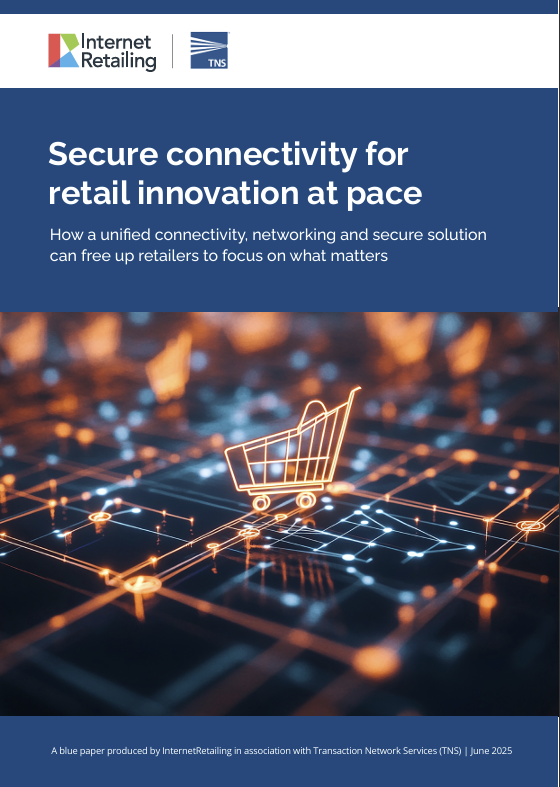As MPs get ready to trigger Article 50, Brexit is becoming a reality. While what the final deal with look like is still up for grabs, it will have an impact on retail. Daniel Bagge, Retail Industry Director Executive Partner IBM UKI offers some advice in these uncertain times.
The one constant in the evolving debate on Brexit is the uncertainty on its eventual impact on the British and European economy. Despite the uncertainty surrounding the outcome of this decision, some recent data has shown reasons for optimism. Figures in early November from the British Retail Consortium revealed that UK retail sales are growing with October sales increasing by 2.4% compared to the same time last year. Tempering that a little, The Economist Intelligence Unit forecasts that retail sales could fall by -3% in 2017 as a result of Brexit.
Regardless of the consequences of the Brexit vote, the uncertainties around the transitioning period will have a profound impact on the retail market. Import costs are rising due to the weaker pound pushing consumer prices up and lowering export costs. Limitations on movement of people and goods, as well as potential trade barriers arising from the growing regulatory differences between the UK and Europe could further impact the way retailers operate. In an industry which is highly competitive and driven by changing consumer expectations, how can retailers continue to innovate, while adapting to this highly volatile market?
Disrupting the status quo
We are experiencing a Brexit Honeymoon with a surge in consumer spend aligned to “Britishness”. In a recent survey, over half of UK consumers (51%) said there will now be more interest in “buying British”. Retailers currently have a tailwind powering them through the early stages of Brexit, with little impact on prices so far due to the hedging of currency and forward buying.
Looking ahead, the impact of Brexit will be first experienced as retailers move into new range planning and product purchase with a diluted set of cash reserves due to the weak pound. This is when the market is prime for disruption driven by the factors of price and confidence.
Although both seem challenging, the best retailers have always been those that have taken change and created opportunity. Key example here being Amazon’s early adoption of ecommerce or simple examples such as Poundland making a new market from the introduction of the £1 coin.
The winners in retail will be those organisations that solve the issues of price and confidence for their customers.
Maintaining and improving customer confidence will require a renewed focus on the customer value proposition, specifically the level of personalisation and perceived value. Value inevitably includes cost, with leading retailers optimising the large operating cost areas of their business: employee engagement, fulfilment, demand optimisation and process optimisation. New levels of insight, digital experiences and supply collaboration will all help to reduce costs and improve confidence.
Keeping customers loyal
In the face of rising costs and competition from abroad, customer retention will help retailers stay in profit by growing spend within a loyal base. Tesco’s open defiance to pressure from Unilever to increase costs for household favourites such as Marmite was a great marketing campaign showing how Tesco champions its customers.
Spending habits are likely to fragment between the cost-conscious convenience spend and the high end luxury spend. Consumers will want both; perhaps ignoring those ranges, or retailers, that position themselves in the middle. As such the retail “bell curve” will become even more pronounced and successful retailers will be those that provide the right service to the right customer at the right time, based on understanding the cost versus luxury motivation. This will inevitably require a new level of insight planning and execution based on consumer context, habits and intentions.
Countdown to Brexit
As well as maintaining customer loyalty, many retailers will also need to revisit their operational strategy. They will need to re-evaluate customer demand, customer segments, channels to market, supply and service to constantly react to the post-Brexit market. As the market transforms, real time insights plugged into business planning will be essential.
For most retailers, the largest cost base is the in-store labour bill which is now set for further increases due to wage regulations. Scarcity of available skilled labour, evolving omni-channel store models and the living wage will all have a large impact on the store operation. To navigate through this change, retailers need to use technology to best engage employees, share measurements, objectives and promote best practice.
Ensuring business agility and becoming more adaptive to changing market conditions
Business agility will depend on editing the retail operating model and not just the range. Great retailers edit their range to select the very best product for their customers. Brexit will force a new level of agility with retailers taking the same approach to their operating model, investing on what they do the best and outsourcing those commodity areas that are non-differentiating. Increasing labour costs and availability will be prime candidates to consolidate.
However, highly differentiated areas of customer engagement and service will need to be constantly developed with customers buoyed by exciting new experiences to lift confidence. An agile approach to innovation will therefore be important to keep the value proposition alive and fresh.
In summary – organisations will disrupt by making the most of the impact of cost and confidence to the UK retail market. Successful retailers will find new business strategies to embrace these challenges, focusing on their current loyal base to get their customer value proposition ready once the impact of Brexit is felt. Innovation will be essential in maintaining confidence and technology will help reduce costs to mitigate the increase due to currency weakness.
This is a constantly ebbing tide and retailers will navigate by investing in insights to inform strategy and execution.








